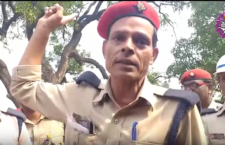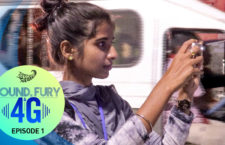This Diwali, as the whole country waits for the Supreme Court decision on the long drawn out
and polarising Ramjanambhoomi dispute, can we think of cultural heritage of Uttar Pradesh
that is not shadowed by communal strife?
We’ve often heard of the Ganga-Jamuni culture of central Uttar Pradesh, but closer to home,
Khabar Lahariya explores stories and rituals of age-old traditions reflecting unity and harmony
across communities, burning as bright as the thousands of political diyas may burn, and offering
a ray of hope in dark times. We take you to Chitrakoot and Banda, a region where Rama is
believed to have spent 14 years of exile, and which remains heavy with mythological
significance. How do different communities share their heritage here, creating a unique one, rich
in local history and determinedly nonbinary?
Whether it’s a Muslim festival that’s celebrated by Hindus or vice-versa, people of all religious
communities not only partake but also jointly organize the celebrations. As Narendra Gupta,
chairman of the Municipality of Karwi in Chitrakoot district told us, “The Ravan effigy burning
tradition is celebrated both by Muslims and Hindus. During Muharram, the soil for the Taziya
(replica of a tomb, carried during processions) is first taken from Hindu households. Another
great tradition is that of eating paan together as a festive tradition during Dussehra.” Such a
strong culture of goodwill is especially significant in view of the data which states that U.P has
reported the most number of incidents of communal violence over the past decade. In Chitrakoot,
Muslims are just 3.48% of the population, as compared to the majority Hindu community whose
share is more than 96% as per Census 2011.
Diwali, a grandly celebrated Hindu festival here, offers a significant example of the sense of
oneness. Jugnu Khan, a local journalist, spoke of how it is believed that Ram spent his twelve
years of exile in Chitrakoot and this is considered his Karambhoomi. He added, “Ram also
passed by Chitrakoot after his victorious return from Sri Lanka, and was warmly welcomed by
the native Kol Adivasi tribes. Hence, Diwali is celebrated magnificently here by all communities,
in the Deepdaan at the Mandakini River. The huge number of pilgrims who come in this season
are fed and sheltered by locals of all religions. The spirit of harmony during this time should be a
message for everyone.”
Shabeena, who works with Vanangana, a local NGO, spoke of how the situation in Chitrakoot is
different from most other places where religious festivals become a reason for discord, “Here,
the organization of festivals is planned by a joint committee of Hindus and Muslims who find a
middle path in all situations of possible differences.”
Shanu Gupta, head of a local business association, aptly spoke of the significance of such an
the atmosphere, “The spirit of unity that has grown from the mutual participation of festivals serves
as an example to be emulated for the whole country.”

